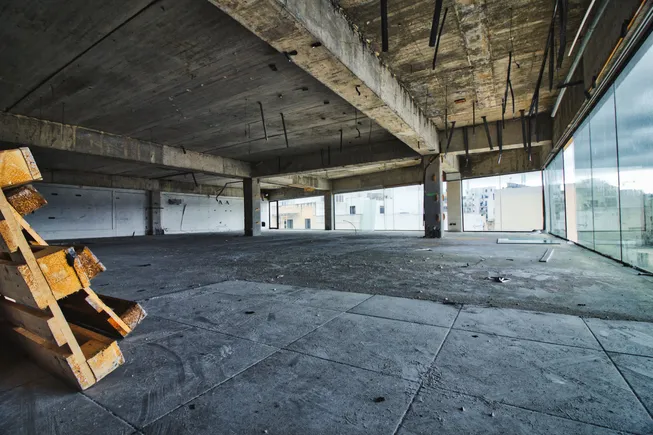Dan Rosenberg is a construction attorney at law firm Much Shelist, where he supports clients in construction, design, real estate and insurance matters. Prior to that, Rosenberg was the general counsel for Chicago-based construction firm McHugh Enterprises. Opinions are the author’s own.
In recent months, high interest rates have caused concern over project delays and abandonments, even as expected cuts this month could curb some of those concerns. Still, we are currently seeing increased signs of financial distress in certain sectors of the construction market, and this distress is affecting some construction project owners.

Dan Rosenberg
Permission granted by Much Shelist
This distress seems to reflect a combination of factors, but appears to be particularly focused on two issues: the relatively high interest rates and a slowdown in demand in certain market sectors. Sometimes, however, a delayed or canceled project can indicate more than just a lack of financing or supply chain headaches, but that the owner is struggling financially.
Below are signs indicating that construction owners may be in distress — red or yellow flags that should cause concern or at least create heightened awareness. These signs become increasingly concerning, of course, when there is more than one sign appearing on a project.
Red flags
Owners and developers of projects, or even government entities, can lose funding or have unanticipated problems arise on a project that the owner neither contemplated nor included in a contingency in its budget. These problems can sometimes have compounding effects on the project. Signs of such distress can include:
Headlines in the media. Obviously, if the media is reporting a loss of funding or other signs of distress, this is not positive for the project. Similarly, if you hear rumors or reports in the industry, you may want to follow up to obtain additional information.
Failure to make payments. It is one thing if there is a dispute that arises during a project and, as a result, a payment is not made. However, it is a much bigger sign of distress if an owner fails to make a payment that is otherwise uncontested.
Sudden slowdowns in payments. If the owner has been regularly meeting its payment obligations but suddenly materially changes its payment pattern, this could be a sign of problems.
Suddenly unresponsive personnel. If the owner’s team becomes slow to respond or suddenly becomes unresponsive, this is not a positive sign.
Significant turnover in personnel. If the owner’s personnel suddenly start leaving and, in particular, if senior officers, such as the CFO, leave, such turnover is not a good sign. High-level personnel often know of issues before others.
Things to think about
If you see signs that a party with whom you are working is possibly in financial distress, besides contacting able legal counsel, there are steps you can take to put yourself in the best position to minimize the financial harm that could impact your business. Below are certain key considerations a business can take to protect itself when an owner or developer is in distress:
Understand your contractual right to stop working. If an owner is not paying its general contractor (or a trade contractor is not being paid because its general contractor was not paid by the owner), it is critical that the contractor understand when it has the right to stop working. Likewise, a contractor must understand the business implications of continuing to work when it is not getting paid.
These considerations can vary depending on whether disputes exist or not on a project as well as the language in the underlying contracts.
Understand the consent and assignment agreement. On most private projects, a general contractor negotiates and signs a consent and assignment agreement at the beginning of a project that gives the owner’s lender the right to take an assignment of the construction contract if the owner defaults under the loan documents. When the owner is in financial distress such agreements become critical.
Keep in mind that these documents often require that the general contractor notify the lender in writing of an owner default. This notification is critical in order to protect the contractor’s interests.
Understand downstream payment obligation. Any contractor that has not been paid needs to carefully understand its own payment obligations. Pay-if-paid clauses become critical in such scenarios, but even if such provisions are in the subcontract, they may not trump certain legal protections that downstream subcontractors may have.
Understand lien rights and consequences of recording lien. There are both legal deadlines to record mechanics liens on a project and business consequences to recording a lien. It is important that a contractor, at any level, understand both the legal and business issues involved.
Be ready for bankruptcy. On development projects it is somewhat rare for a single purpose entity that likely holds title to a piece of property to file bankruptcy, but it is not impossible.
As 2024 continues, be on the lookout for owners or projects that are faltering and use these tips to protect yourself if it happens.
Much Shelist principals Scott R. Fradin and Robert Glantz contributed to this story.

